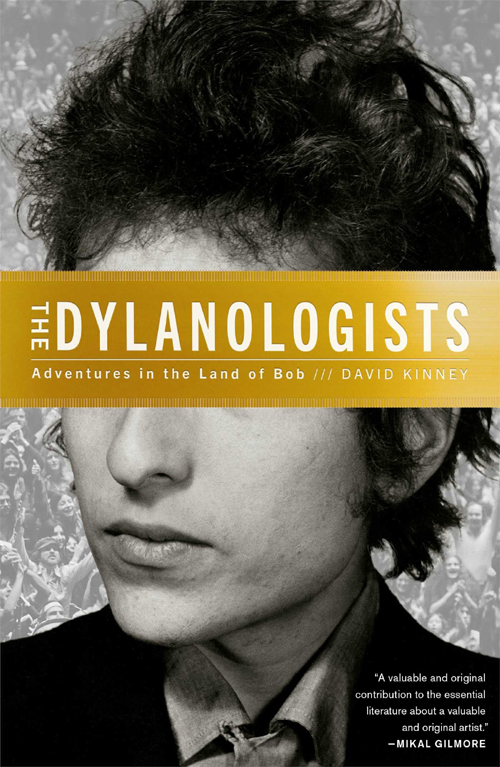
The Dylanologists: Adventures in the Land of Bob (Atria) by David Kinney
In 2012, a 67-year-old resident of Newport, Minnesota, was snacking on a packet of Clancy’s “ripple” potato chips when she was granted a divine epiphany. “[When I saw] the second chip I pulled out of the bag,” she told a local paper, “I said, ‘Oh my God!’” She called her husband over and showed him the crisp in her hand, drawing his attention to the hole at its centre. “It looks like Jesus on the cross,” he confirmed.
The reading of significance into what is, to others, patently insignificant is part of the devotee’s experience. It’s also a symptom of erotomania, a type of delusion often associated with schizophrenia, in which the person affected becomes wrongly convinced that someone – a stranger, a friend or a celebrity – is in love with him or her. Ian McEwan’s novel Enduring Love is perhaps the best known fictional rendering of the condition but the conviction that one’s feelings, if strong enough, will inevitably be reciprocated is a mainstay of the romantic narrative, be it in cinema, song or our own imaginations.
On YouTube, a spoof trailer for Nora Ephron’s Sleepless in Seattle shows scenes from the film expertly recut as if from a stalker picture in the vein of Fatal Attraction. Whether a story about a woman crossing America in order to stand around watching a stranger whose voice she found attractive on a radio call-in show is heart-warming or horrifying depends on the outcome; if Tom Hanks’s bereaved dad just didn’t find Meg Ryan’s stalker-cum-reporter attractive, who knows? Perhaps the police would have been called and a restraining order promptly issued.
Something similar happened in 1981. Carmel Hubbell left her home in Michigan and headed west to Santa Monica, hoping to track down Bob Dylan. Learning that he was rehearsing at Rundown Studios, she stormed the building, insisting on meeting her idol. Hubbell was forcibly removed but she soon took to wandering on to the singer’s Malibu property and leaving notes on the windshields of Rundown staff, addressed to her “sweetheart”. As the days passed, the tenor of the love notes became increasingly threatening. One read, simply: “Ms X = Ms Manson.” Coming so soon after John Lennon was shot dead by an autograph hunter, and with Sharon Tate’s murder in 1969 still a relatively recent memory, the missive could not have come across as anything but deranged. When Hubbell called one of Dylan’s backing singers and told her that her life was in danger, the lawyers were brought in to put an end to the harassment.
Bobcats – Dylan fans – are known to be a notoriously obsessive people, citizens of what Greil Marcus once called an “invisible republic” who delight in the weird, old rituals of an imagined America. Like John Lennon’s and Yoko Ono’s “conceptual country” Nutopia, it’s a place with “no land, no boundaries, no passports”; citizenship “can be obtained by declaration of your awareness” of it. In other words, a feeling of hipness is the defining trait of both the Dylanologist and the Nutopian – a kind of hipness based less on exclusivity than on acknowledging possibilities that extend beyond our day-to-day lives. I write “our”, not “their”, because I’m one of them. In the 1990s, I was all set to pursue a life in the sciences until my discovery of Dylan’s 1965 album Highway 61 Revisited forcefully shoved me down the rabbit hole of 20th-century music and literature.
The world-view professed by some of his best songs – that there is “no limit”, that you should “trust yourself” – encourages the deep-endism unique in star culture to the Bobsessive. Owning 50-plus studio albums by one man might sound a bit nerdy but we ignore the doubters, the squares, the Mr Joneses who know something’s happening but just don’t know what it is. No other band or musician has had as many books written about them; no one else inspires the kind of fan extremism detailed in David Kinney’s excellent new book The Dylanologists. The stories he tells – of the itinerant woman who called herself “Sara Dylan” after Bob’s ex-wife; of the man driven to buy Dylan’s childhood home; of the “pilgrims” who descend each year on Hibbing, the town where Dylan attended school – are reminders for “ordinary” enthusiasts like me of what could happen if we took our interest that one step too far.
Kinney also points out drolly that Dylan was no different – he stalked his hero Woody Guthrie when he arrived in New York and was later spotted at Sun Studios in Memphis, where Elvis recorded his first hits, and at Lennon’s childhood home in Liverpool, awed by the sacred sites: curious behaviour for a singer who once exhorted, “Don’t follow leaders.” He is human, after all – though I won’t be surprised if someone eventually finds his likeness in a bag of Doritos.

